The business world loves to use the term Ecosystem. Within the business context, an Ecosystem is any system or network of interconnecting or interacting parts. An Ecosystem generates value for its constituents (i.e. elements) through the dynamic interrelationships among these constituents. It can be influenced by both internal and external factors.
The HR Ecosystem is comprised of 10 key, interconnected elements—known as the 10 Gs. These 10 elements are related across 4 levels, from micro (ground or organizational level) to macro (global level).
In this framework, we dive into each of the 10 Gs:
- Goal-The goal embodies the strategic intent, vision, and mission of the organization. In managing and developing people, we need to align our Talent with the goals of the organization. Employees should know and understand what the organization’s top goals, priorities, and strategies are, so they can act accordingly to help the organization attain its goals.
- Get- There are numerous challenges to getting the right people into an organization. These challenges can often be traced to a Talent Gap—i.e. the gap between Required Talent and Raw Talent. Especially in today’s rapidly evolving world, driven by advances in Digital Transformation, many candidates leave school only with Raw Talent, but lack Required Talent. Required Talent can be both technical/functional and soft (e.g. confidence, leadership, team work abilities) .In candidate selection, it is important to not only select someone who fulfills the technical capabilities for the current role, but who possess the potential to be further developed into a future leader of the organization.
- Grow-This element captures important decisions in both Training and Development. Training and Development go hand-in-hand and are intertwined.–Training focuses on current needs. It is teaching people to do something now.–Development focuses on future needs. It is helping people elevate to positions down the road.The identification and definition of Talent Training and Development needs is of the highest importance.We should have clarity of the program participants, presenters, designers, coverage, delivery methods, expected changes, expected results, etc.
–In evaluating the effectiveness of Training Programs, a metric often used is Return on Training Investment (ROTI).
- Give –Reward and recognition are 2 of the most important tools in Employee Retention and maintaining Employee Satisfaction. What we give employees must be perceived by employees to be both fair and competitive. In most cases to be perceived as fair, the system of giving reward and recognition must also be transparent. If not, our top Talent are likely to leave to other organizations that offer more competitive rewards.
- Glue – Being able to retain top Talent is critical to the success of any organization.
In fact, replacing top Talent can be incredibly expensive. In some cases, top Talent is irreplaceable.
If we have an issue of Employee Retention, we must diagnose the problem to determine why people are leaving. We need to explore both financial and non-financial reasons and take appropriate remedial actions immediately.
On the other hand, high Employee Retention and Employee Engagement leads to higher levels of growth and productivity—and is a source of Competitive Advantage for the organization. - Glow- his element is the most subtle. “Glow” can be demonstrated through a variety of ways, such as:
-A clear path to career growth within the organization
-Support and encourage from the organization
-Allowing volunteers to take challenging tasks
-A culture that encourages employees to innovate, experiment, and pursue Corporate Entrepreneurship - Guard-Guarding is executed through a proper and robust set of employee policies to safeguard employees.
Guarding also includes corporate values that are widely shared, communicated, and practiced.
Although this exists at the Ground (i.e. organizational) level, Guarding measures are also instituted at higher levels through Employee Protection regulations. - Grapple- There always a constant fight for top Talent. There is particularly true for roles that are more specialized. Despite the contentious nature of companies competing for top Talent, there are possibilities for collaborations among competing organizations with regards to HRM.
An alternative to competing for external Talent, many organizations also try to grow it from within. This refers directly to the element of Grow. - Grip-Grip is the collective and committed Human Resource Management response to the Gearing Factors. Gearing Factors are the external environmental PEST (Political, Economic, Socio-cultural, Technological) factors that gear or influence the steering an industry (and likewise the organizations within).
Additional factors can include Legal, Ethical, Ecological, and Demographic.
When such a factor comes into play, HR must deliberate, decide, and do the needful response in such an event. In other words, must take a firm “grip” in responding to the influencing factor. - Gratify- Gratify refers to gratifying stakeholders to meet and manage their expectations and maintain stakeholder satisfaction. Governing Elements include government, labor unions, HR professional bodies, HR research institutions, etc. These various stakeholder groups have diverse, sometimes opposing expectations.
Here, HR plays a macro role. HR professionals must connect, cooperate, and collaborate with multiple organizations and communities at the national level.
The foundation of our discussion begins with an understanding of the concept and nature of an Ecosystem
What is an Ecosystem?
- In its purest form, Wikipedia defines Ecosystem as a community of living organisms in conjunction with the nonliving components of their environment, interacting as a system.
This definition can be further broadened to represent a group of interconnected “elements,” formed by the interaction of a community of organisms with their environment
The goal embodies the strategic intent, vision, and mission of the organization.
In managing and developing people, we need to align our Talent with the goals of the organization.
Employees should know and understand what the organization’s top goals, priorities, and strategies are, so they can act accordingly to help the organization attain its goals.

